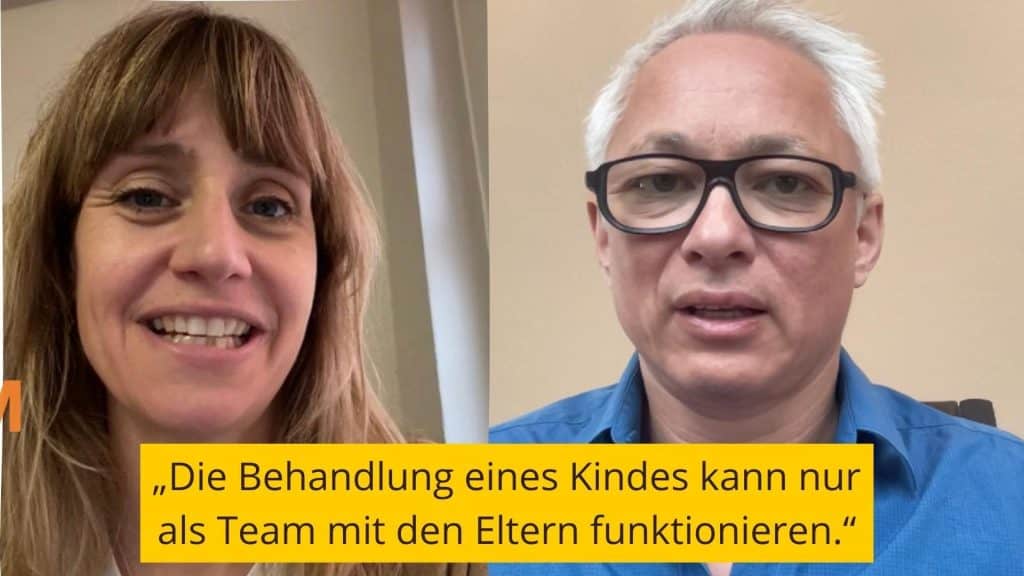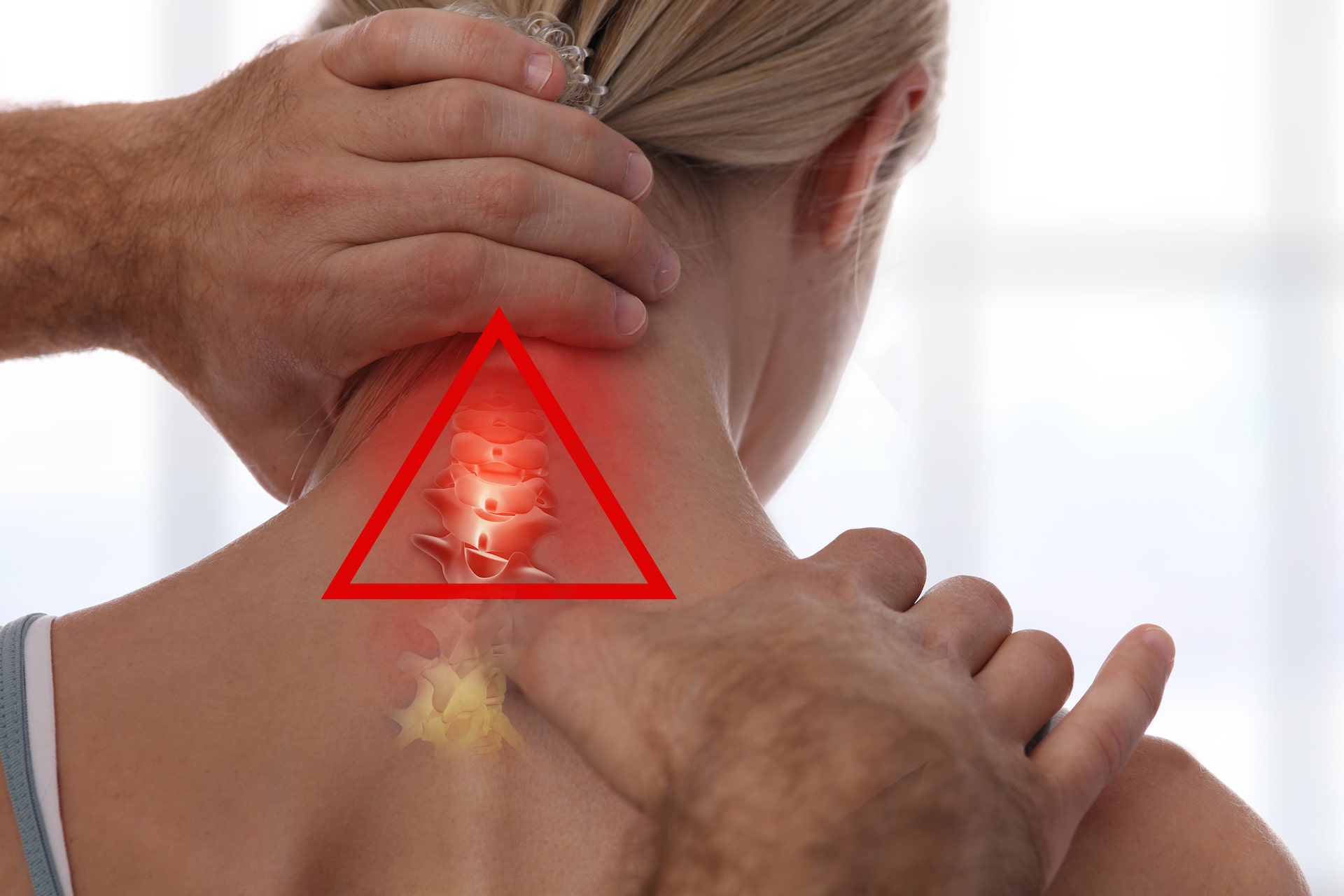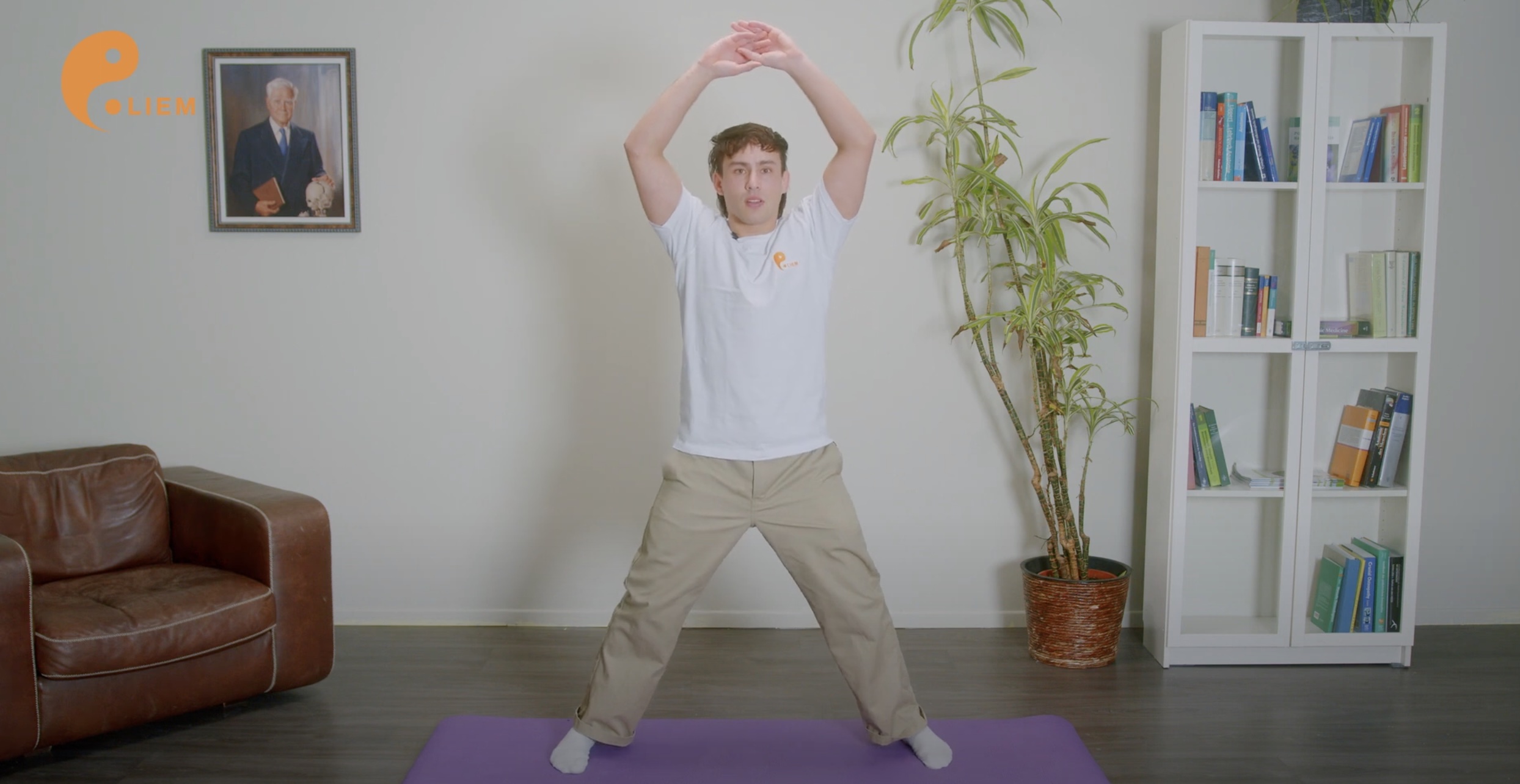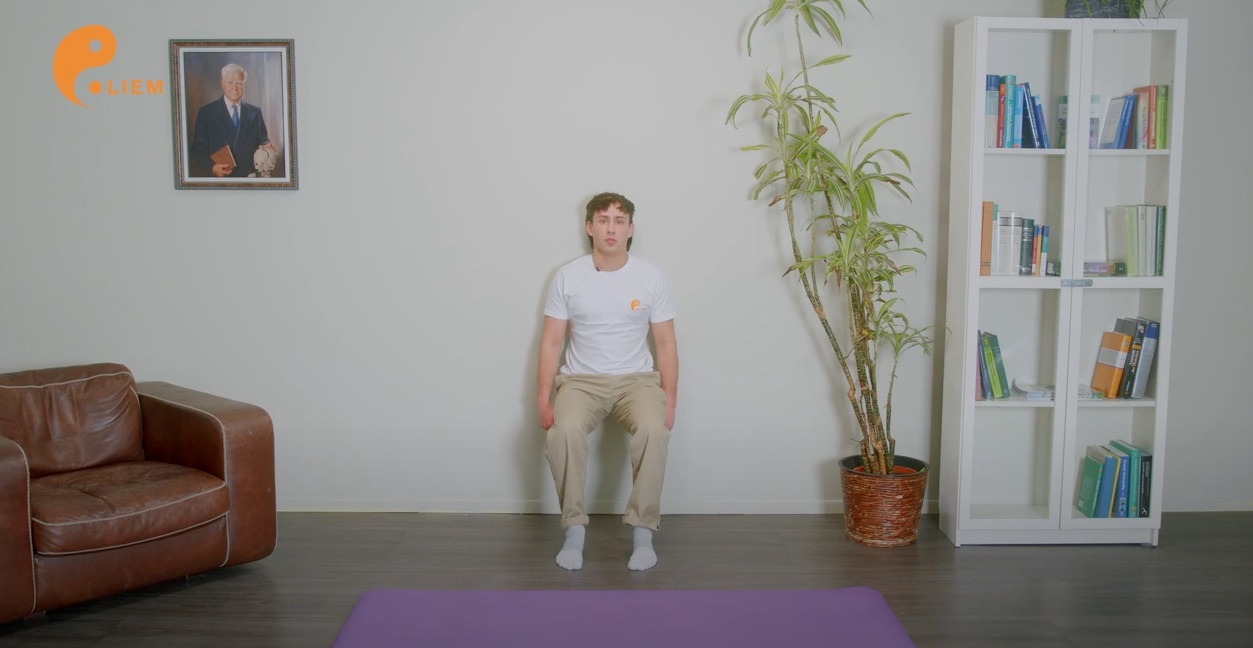"The treatment of a child can only work work as a team with the parents."
How can paediatric osteopathy be implemented in practice? In this interview, Torsten Liem describes his approaches and concrete approach to treating children and infants. Torsten Liem developed a further training course in 2001 and an M.Sc. course in 2004 on the treatment of children, which was first held in Germany in 2005, and is co-editor of three books on the subject. The interview on osteopathy in paediatrics was conducted with him by Christina Lenz (London, OCC) M.Sc. B.Sc. (hons) East FHEA.
CL: Tell us about your background in treating children?
TL: From the beginning, many children appeared in my practice and I attended numerous osteopathic courses on the subject, e.g. with Viola Frymann. However, these courses were all more or less the same and so I developed further training in 2001 and an M.Sc. course in 2004 on the treatment of children.
CL: With what complaints or intentions do parents come to your practice with their children?
TL: They come with the wish for a check-up in case of difficult births or pregnancies, premature births, breastfeeding, speech, sleep problems, as well as digestive disorders such as three-month colic, recurring middle ear or sinusitis, plagiocephaly, developmental delays, learning disorders, or young people with postcovid symptoms also come. In the past, appointments were cancelled for febrile illnesses, but now it is not uncommon for parents to come with their children for additional osteopathic treatment.
CL: What do you do in such cases?
TL: Osteopathic lymphatic techniques, immune system support, improvement of pharyngeal, laryngeal tissues, gentle regional rhythmic treatments, suboccipital inhibition and I show parents how to use osteopathic lymphatic techniques on their children themselves for a few minutes several times a day.
CL: Is the furnishing of the practice room also important for your treatment?
TL: Absolutely, the room should radiate warmth, trust, relaxation and comfort so that children and parents can relax, feel safe and cared for. The colours are warm, there are positive images and beautiful objects and in the window there is a green garden and trees.
CL: How do you interact with the child and the parents in the first consultation?
TL: I just try to be present, observe the family dynamics and see how mother, father and child interact with each other to get an understanding of the family dynamics. In my opinion, the children's symptoms are related
are not infrequently strongly related to the family dynamics or are at least influenced by them. For me, this entire dynamic of the family environment is just as important as the individual symptoms, the history and dynamics of the child, not only in the diagnosis, but especially in the treatment. That is why the therapeutic relationship with all those involved, including the parents, is very important to me. Then I first make eye contact with the parents and with the child and ask: "Why are you here?
In doing so, I have already sent a questionnaire to the parents to be filled out before the first consultation. In this way, I ensure that important information that may be of significance for the therapeutic support of the healing process is not lost.
CL: What is the importance of eye contact for you in treatment?
TL: Oh, a very big one. In humans, the eyes are the most important sensory organ. It replaced the olfactory organ in phylogenesis when we switched to bipedal locomotion. This is also reflected in the large number of neurons in the optic nerve, about one million. The auditory nerve, for comparison, has only about 40,000 neurons.
Eye contact is very essentially associated with communication, the great importance of which has been highlighted in numerous experiments, e.g. in the still-face studies, in which, if the mother no longer reacts to the infant's expressions with her facial expressions, the infant completely decompensates in its behaviour within minutes. This is why eye contact is so essential in the child's co-regulation, in addition to touch and other measures.
CL: Please explain to me the term "coregulation". What do you mean by that?
TL: By co-regulation, I mean that a child needs its parents in order to
learn to regulate themselves, e.g. when their tummy is squeezing or when they are tired and can't get to sleep straight away. It learns to calm itself down through the contact of the parents. After birth, humans are also biologically much more dependent on their parents than other animals and essential developmental steps only take place after birth. We need the parents in order to survive. This is why the early years are so influential for the rest of life. Research related to the Adverse Childhood Experience questionnaire shows this, for example. If more than 4 out of 10 questions are answered positively, after all in about 16% of the population, this increases for example the risk for alcohol abuse by 7 times, and the risk for suicide by 12 times.
In a way, the child first learns to recognise its needs by having experiences with someone who can fulfil its needs. That is the parents.
CL: What is the further course of the consultation? What is it particularly characterised by?
TL: I mainly use open questions. I give the parents enough time to question and explain everything. I give them a lot of space and interrupt little. If I need more information, I would usually ask them about it afterwards.
I do not want to dominate this moment, but give plenty of time and space for the therapeutic relationship to develop and for the parents and child to feel seen and heard with their needs, to feel taken seriously and for trust to develop. Parents and children should not feel analysed. Therefore, a sensitive atmosphere is essential to me, where the needs of the child and the parents have space to show themselves and trust can develop. I simply give them as much comfort as possible in their behaviour, in what they need, and I support the parents' care for their child and always encourage them to be able to behave in the way that suits them best, the way that is natural for them, e.g. in dealing with their child or with each other when both parents are present. For example, when the baby cries, I am relaxed and in contact with the child and the parents, I am open and relaxed. I give the parents and the child my attention, in a loving, non-judgmental way, without trying to dominate the situation in any way. It is a very important competence for me, especially in the treatment of children.
This also gives me a lot of information that I don't only get from the content of questions.
And this is the basis for parents to honestly tell me how they feel and honestly describe situations and interactions that can be important for understanding the complaints and healing. This is also essential for the child and parents to engage in the healing process. In doing so, I recognise and value all previous efforts to support their child in the best possible way, as well as existing competencies and, if necessary, their powerlessness in the face of certain situations.
CL: How did you come to this view, this approach?
TL: If I put pressure on them, it would only increase the stress in the situation and I don't think that makes sense. It has become more and more clear to me over the many years that treatment generally only works as a team with the parents, and it is therefore incredibly important to integrate them into the treatment process whenever possible, because after treatment the parents have the strongest influence on the child. I cannot work without the parents, but only together with them.
CL: How is the transition to treatment marked?
TL: I explain my therapeutic approaches. If necessary, I make parents curious about some of the child's gestures and behaviour. This way I support parents to react appropriately in relation to the child's needs and that the parents are open to something new that might happen in the treatment.
I first verbally ask the parents for permission to interact with the child and also point out that you can stop the treatment at any time if they disagree with whatever.
The treatment usually starts with me resonating with and possibly copying the child's mimic expressions, postures, gestures and small movements. Before I start with any exploratory touching of the child or baby, I would again first ask the parents for permission.
In the further course of the treatment, I have a piano player, a piano, other instruments and toys in the room. Depending on the situation and age of the child, these can be used, on the one hand so that the child can express itself spontaneously, and on the other hand to enable a healing, resource-rich flow state for the child and the parents during the treatment by means of resonance and synchronicity of touch and music.
CL: Do you involve the parents during the children's treatment?
TL: Yes, here too I offer the possibility - in a relaxed way and ask the parents if they want it. I don't force them, I just invite them, depending on the needs of the baby and the parents. In particular, if the child asks for the parents through gestures, I ask them to put their hands on the region they want, for example, holding their belly or their child's hands. Sometimes the children also want to sit on the parents' laps.
I also invite them to say "stop" at any time if they disagree with anything I do in the course of treatment.
CL: Are both the parents and the baby sometimes treated?
TL: The parents come to treat the babies and at that moment my focus is on treating the baby with the involvement of the parents and possibly other family members or contexts.
If I see that there are indications for treatment for the parents as well, I would inform them that separate treatment would be possible.
CL: What do you do when a child does not want to be touched by you?
TL: I don't touch it. When the baby refuses to be touched for whatever reason. This doesn't usually happen with newborns, but can happen with children from 6-8 months. I respect that and give the child as much time as necessary.
Sometimes children show discomfort when certain parts of the body are touched, such as certain parts of the head. In these cases I am equally gentle and dose my touch according to the situation.
CL: What leads you to treat certain parts of the body?
TL: Firstly through the child's gestures, they often touch these places themselves with simultaneous expression of discomfort, secondly through my palpatory examination and thirdly possibly also through the parents' description of the discomfort.
Touching this region of the body could possibly also be associated with unpleasant "memories" or afferent nociceptive sensations. Here I check to what extent a gentle palpatory therapeutic approach is helpful. Sometimes children want to be seen to have unpleasant sensations in certain areas of the body, and by allowing them to see that I see them, they can increasingly relax and gestures change. I always allow the child to take my hand away - this can even be part of the treatment process. Sometimes it also seems necessary to gently inhibit these nociceptive afferents. Essential and fundamental is that my hand contact is very gentle and non-invasive.
CL: Why is a gentle touch essential for you?
TL: Toddlers are particularly sensitive to touch. We distinguish between discriminative, affective, and later also evaluative and therapeutic touch. While in the examination of infants we can also carry out evaluative and discriminative palpation, if necessary, in addition to purely passive palpation, I use empathic touch in particular in the treatment of infants.
Empathic touch is characterised in particular by a slow hand approach with very light pressure. A pleasantly warm hand and a warm environment are also important. Almost all areas of the body are receptive to this kind of touch, but the neck, back of the head and upper chest react particularly well, so that the insula is activated via C-fibres, lamina 1 and the posterior part of the ventromedial thalamic nucleus and unfolds a relaxing effect.
CL: Do you also involve the parents here?
TL: Yes. I usually start by explaining the effects of gentle touch and that sensitive skin-to-skin contact generally relaxes the child and reduces pain and feelings of stress, but it is also good for the parents themselves and the parent-child bond. Because, if they understand it, they are more likely to use it.
For example, I invite them to put the child on their lap and put their back against their belly and breathe into their belly.
If I see that the parents are touching the child too hard or inappropriately, I point this out to them and show them how they can improve their touch to better meet the child's needs, and also let them try it out in practice. Sometimes I encourage them to put their hand on mine and feel how I touch.
CL: When you talk to parents, how do you try not to be biased?
TL: Well, firstly, I know that I am naturally biased because of all my experiences and imprints. Secondly, knowing my bias, I adopt an attitude of openness and empathy. I don't really need a strategy there. Based on my conviction and understanding of life, I believe that everyone lives the best version of themselves in terms of all their lived experiences. I connect from the heart. In this way I meet
them with understanding and this is not exhausting but natural and I give them space, a kind of therapeutic uterus and appreciate their efforts and needs to do the best possible for their child.
This approach has deepened over the course of my life, actually the more I also identify, put into perspective, and come to terms with my own not always good experiences, as well as painful and challenging situations and contexts from my past that limited my life, and thus integrate them and my life gains depth, flexibility and colourfulness. I learned first-hand that this process can be encouraged and supported, but not forced, but runs at its own pace.
I also have a certain didacticism in relation to osteopathic coaching of parents and patients. It is usually not that I give advice, but rather that I listen attentively, take an interest. Other times I make them curious about certain behaviours of the child or explain mechanisms of action that are important for understanding, so that out of this understanding, the parents or patients often make suggestions themselves about how they could do it better. And I answer their questions, affirm or encourage them to try it out.
Sometimes I also give them practical advice, for example on diet, and explain why it might be helpful to do it this way.
CL: What skills should an osteopath have to treat children?
TL: Here the answer could be very profound and complex. Ultimately, a differentiated answer to this question would be to discuss, for example, the curriculum of paediatric osteopathy at the Osteopathie Schule Deutschland, which I developed.
An abbreviated answer could be exemplary: Many changes take place in childhood, for example the sensorimotor, musculoskeletal, metabolic, immunitary, gastroenterological, cognitive, limbic and psychological development of the child and associated time windows such as ossification times, reflex detachments. Accordingly, the diagnostic procedures are different in children than in adults. In addition, certain clinical pictures occur in childhood with specific epidemiological factors and risk factors that need to be known. Likewise, mechanisms of action, some of which differ in childhood from other age groups. The treatment of children also differs in part significantly from that of adults, for example in disorders of the oral function. The techniques used are also different for children. And last but not least, working in networks with children needs to be known and practised.




